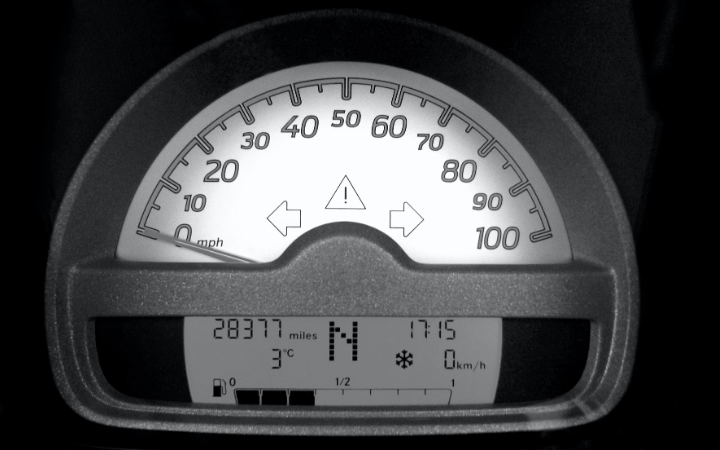
by Coach Adolfo Salgueiro | Nov 1, 2022 | Article, Reflection
By Coach Adolfo Salgueiro
Wouldn’t be impressive if we could PR in every race, of every distance, in every season? Sure, it would be remarkable. But it is not possible, so let’s accept it cannot be done and move on, focus on what we can actually achieve and go for it next time, hopefully when conditions are optimal.
A bad race is part of our running life. An inferior performance is inevitable even if in the best of circumstances. There will always be parameters we can’t control, such as weather, wardrobe malfunctions or health setbacks, among many others. So, what to do when we don’t have an ideal performance despite the arduous work, effort, sweat, money and emotion we have invested into a race? We evaluate and we move on.

Frustration after a bad race is normal and healthy (Photo Gideon Tanki, Pexels)
Imagine if Eliud Kipchoge had given up after finishing 26 seconds late on the Breaking2 Project back in May 2017? After all the hoopla and the money invested by Nike, he failed in completing the task. He would have missed out on the success of the INEOS 1:59 Challenge, where he ran 1:59:40 in Vienna in October 2019. Had he not moved on, he wouldn’t have set up marathon world records in Berlin in 2018 and 2022, cementing his position as the greatest marathon runner of all time.
As the fall racing season gets into gear, be prepared. So, when it is our turn to fail, either miserably or just by running short of our time goal, you’ll know what to do. Invest in finding the courage, the drive and the motivation to continue pursuing your physical limits. You do so by:
Accepting it is normal to be frustrated: You worked hard for a goal, and you did not get it. That is infuriating. So, be frustrated, sure, but don’t bottle up your emotions. Not setting up a PR, having to walk part of the course or not getting onto the podium are all valid reasons to be upset, but not to feel like a miserable loser. Most likely this race was not the payday you needed to keep your family afloat. So, keep the perspective. Let the misery through your system and move on.
Debrief the race: Just after finishing a bad race, when you are hanging out with your friends at the finish line, may not be the best time to recreate the race and figure out what went wrong. Give it some time for all the memories to settle in and your body to recover. Then, do some introspection, talking it over with you coach or running buddies to see if you can pinpoint the issues that lead to the failure.
This is not your last race: There are 5K races every weekend, half marathons throughout the year and there are not many towns and cities these days that don’t have a marathon. So, fortified with what you learned in your debacle, set your sight on a race to redeem yourself, train hard and apply the lessons learned. Sounds promising already.

No need to think this is the end of your running career. You can redeem yourself on the next race (Photo: Cottonbro, Pexels)
Ask yourself the tough questions: Figure out what the main reason why you did not perform as expected. Asking the right questions should lead you to the answer you need. Did you bonk because you did not consume enough calories? Did you get dehydrated? Did you start too fast? Did you start too slow? Did you start too far back and had to weave around slower runners? Were you overdressed or underdressed for the weather? Did your experience stomach issues? Did you party last night? Did you eat and/or sleep properly the night before?
Learn a lesson: What you get when you did not obtain what you were looking for originally, is experience. Success doesn’t come just from achieving your goal every single time. It come from showing up, working hard, doing your best and failing. Sometimes, learning from a failure may be more beneficial to your future running self than completing one goal, one race.
Register for your redemption race, ASAP: Identify the race where you are planning to redeem yourself. Register for it and start working on it right away. The sooner you register, the faster you’ll apply everything you just learned.
Bad races are inevitable. Rebounding from them is mandatory.

by Coach Adolfo Salgueiro | Aug 2, 2022 | Coaching, Science
By Coach Adolfo Salgueiro
As a running coach, athlets often ask me about weekly mileage. How many miles should I run if I want to complete a marathon? Can I only increase my mileage by up to 10% a week? Why can so-and-so run XX miles a week and I am running only half of that? Am I losing fitness if I lower my mileage for recovery purposes for a week or two? And many, many more.

The right mileage is as individual as each runner. There is not one number that applies to everybody (Photo: Pexels)
Well, the answer to all these questions is the same. It happens to be the same answer to most running questions: It depends.
They key for any runner looking to improve on their times, distance, pace or fitness is to understand that the main goal should be based on performance, not on a pre-set number of miles. It is a matter of achieving your objectives while remaining healthy and injury-free. I recently read that you should run in between “as much as you can get away with and as little as you can get away with”. Genius!
The appropriate mileage for a runner is as individual as each athlete. It depends on a series of variables which need to be dialed appropriately so progress won’t be hindered, and injuries may stay away from the equation. Such variables are:
Goals: Before you figure out what is the right mileage for you, set up your goal. If you want to run your first or your best 5K, you will not run the same mileage as if you were training for a marathon. At the same time, a marathoner may need to run 100+ miles per week if he wants to run 2:20, while that number is a prelude to severe injury for a runner trying to break 4-hours in the same distance.
Age: Even the elites slow down as they age. They still run more than you or me, but they require more recovery in between vigorous efforts. What you could do in your 20s or 30s no longer applies in your 50s or 60s and you must accept it as part of the aging process. Look forward to competition in your age group and to be the best you can be at whatever stage of your life you’re currently at.
Experience: If you have been running for 30 years, your body is adjusted to a certain pounding on its bones and soft tissues. This alone will allow you to run longer. Not because you are holier than thou, but because you have adapted. Understand that not because you have adapted, your body can take unlimited mileage, so don’t overdo it either.

Miles are dictated by the interaction of many variables, such as goal, pace, experience and injuries, among others (Photo: Mikhail Nilov, Pexels)
Pace: Most runners want to run as fast as we can. We would love to set up PRs in every race, but that’s a chimera. So, we adapt to reality. Running slow is the key to running faster, for many physiological reasons that are beyond the scope of this post. Understand that the long run is about spending more time on your feet, pounding the surface, not about running faster. The sooner you’ll grasp and accept this concept, the faster you’ll be running.
Injuries: Certain injuries will require you to stop running altogether. For days, weeks or even months. Others will force you to reduce your mileage but not necessarily stop. Be smart and make sure you understand what your body is communicating. A shorter mileage today may be the key to avoiding zero-mile months down the road because you overdid it and now you are injured.
The 10% Rule: This is an urban myth. This is not a magic number, not even a well-reasoned percentage. If you are an experienced runner and your body has done it recently, you can increase that mileage by as much as you can tolerate it. If you are coming off 10 years on the couch eating Doritos and drinking Coke, it is advisable to take it easier. Less than 10% per week.
Sure, there is always the freak of nature that hit the gene lottery and can do whatever they want, for as long as they want at whatever pace they want, with little to no recovery time. Yes, they exist, but those are outliers. Do not compare yourself to them. It would be like comparing yourself to Eliud Kipchoge and not understanding why you can’t run a sub-2 marathon. So, be smart.
The essentials for a solid running plan are flexibility and adaptability. It must be dynamic. The best is always an individual plan, personalized just for you. But it is understandable that this is not in everybody’s reach. Generic plans downloaded from the internet may be ok, but are dime-a-dozen, with the key operating word being “generic”. If you are to use one of these, make sure you are not so rigid that you’ll end up hurt because you did too much or undertrained at the starting line because you did too little.

by Coach Adolfo Salgueiro | Aug 17, 2021 | Article, Opinion, Personal, Reflection
By Coach Adolfo Salgueiro
Maybe because I started running way before personal computers and the internet were ubiquitous. Or because I am a visual person. Or because I am just traditional. I like to keep track of my sporting activities in a written log. For years I handwrote in a 3-ring binder and, as the technology progressed, I set up a spreadsheet that has been constantly changing as I learned more about the wonders of MS Excel.
These days, with Garmin, Strava, TrainingPeaks, RunKeeper, and many, many more, you just forget about it, and someone keeps track for you. And they do so with more parameters than you will ever need, know what to do with, or care for. I do believe it is inevitable that any “serious” runner will end up with a GPS watch and an online account, and that is a good thing. But at the same time I believe that so much data, uploaded up there in the cloud, where you can access but small portions of it at a time, is not necessarily better. Yes, well into the 21st Century, I advocate for a written running log.

World Record holder Eliud Kipchoge has been keeping a handwritten running log since he turned professional
Eliud Kipchoge, —yes, that Eliud Kipchoge— has kept a had written, yearly running log since he became a professional runner. He records in every single workout as detailed as possible, also adding things and thoughts from outside the running world that may help his training. “When you write, then you remember”, he says. If it works for Kipchoge, maybe you should give some thought.
There are multiple ways to keep track of your activity. You can do it by hand in an appointment book, a 3-ring binder, or a notebook. There are also a variety of journals on sale specifically designed for this purpose. In your computer you can develop an Excel sheet to track what is important to you, or you can just write in your entries in a Word (or equivalent) document. Google has spreadsheets and documents that are accessible in your desktop computer and phone. The options, these days, are limitless.
It is important to take your time to write or type something into your journal, purposefully, so you can internalize it, meditate on it, and visualize. Your GPS watch doesn’t record your thoughts.
Your entries can be arranged, based on the platform where you keep them: daily, weekly, or monthly. My personal preference is monthly because it allows me to review a bigger segment of my training in a single glance. Since I developed my Excel sheet, I have added weekly totals, monthly and yearly totals, pace average, heart rate, temperature, humidity, cross training, and much more.
Why do we keep track?
-
Because when we get in a rut (and you will), you can go back to when you were doing great and check what worked for you back then.
-
Because when you are training for your goal race you can glance your entire training without thumbing through hundreds of single entries in Strava or Garmin.
-
Because when you decide to change GPS watch brand, or want to change your online tracking platform, you won’t lose the data in your account.
-
Because when you are looking for a specific piece of data you can flip a page or two instead of combing through thousands upon thousands of data entries that were not designed with your needs in mind.
-
Because you can store it by year, month or whatever parameter works for you so data will be easily accessible when you need to consult it.
-
Because it creates a spectacular database that will become your frame of reference to get you from where you are today to where you want to be, tomorrow.

Handwritten logbooks or computer spreadsheets can become as elaborate or a simple as your individual needs.
If by any chance I have persuaded you to give a running log a try, start right away. Now! Write down date, mileage, time and specific, detailed notes of each workout. If you did a particular mobility exercise or weightlifting routine that made you feel good, write it down. If you ran with someone who helped you get the best out of your ability, write it down. If the temperature or humidity became a pro or a con on your run, write it down. If you started with a new pair of shoes, write it down. If you feel any parameters become key in every workout, start tracking them.
The key to the usefulness of your log is the quality and trustworthiness of the data. If you fail to do your entries after each training, if you don’t keep good notes on why it went great or why you bonked, if you are just guessing your mileage and time, if you are lying to yourself, if you misplace your logs in your home or computer; then you are better off not wasting your time.
Think of all the benefits I’ve enumerated and check for yourself if they have any merits.









